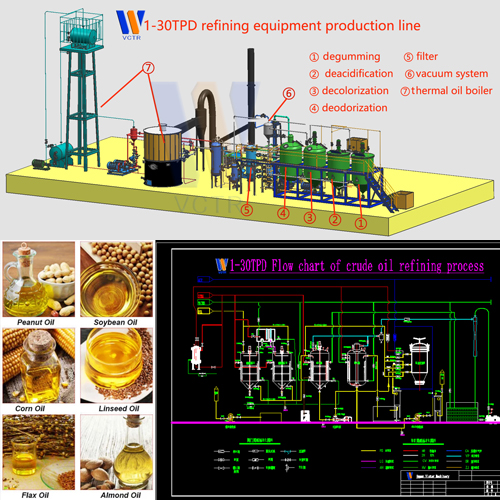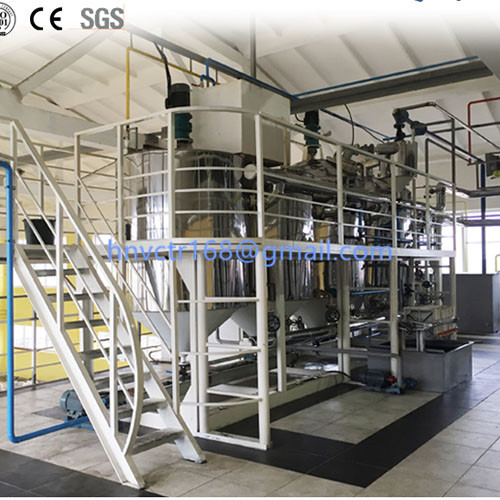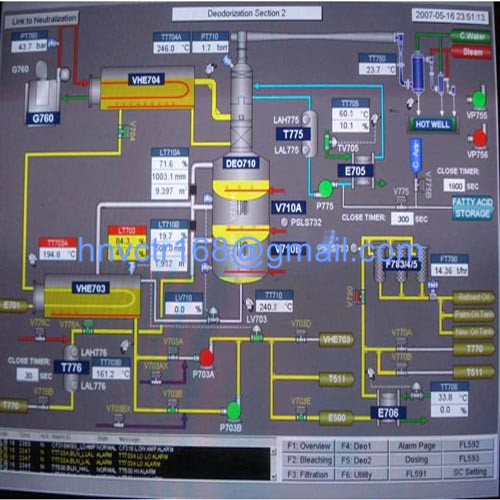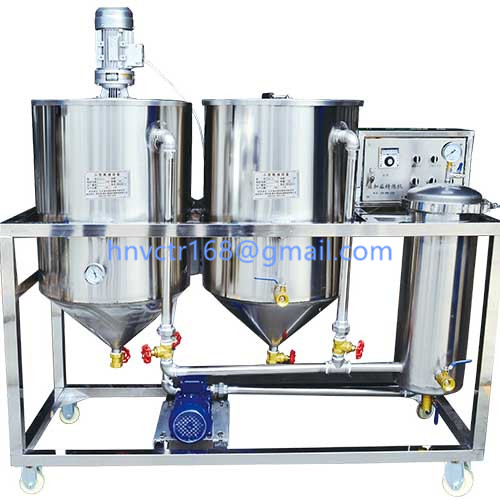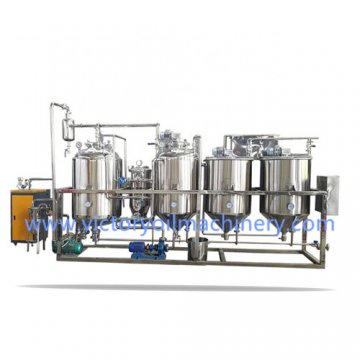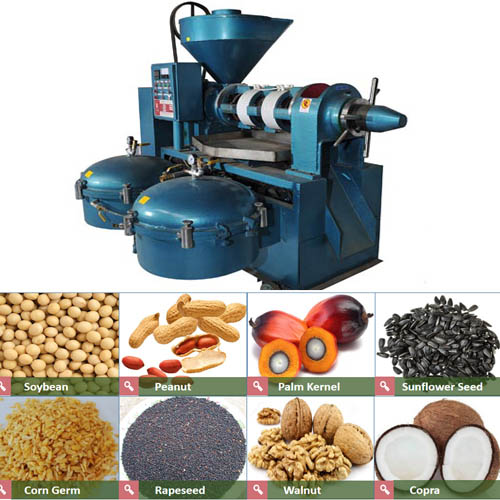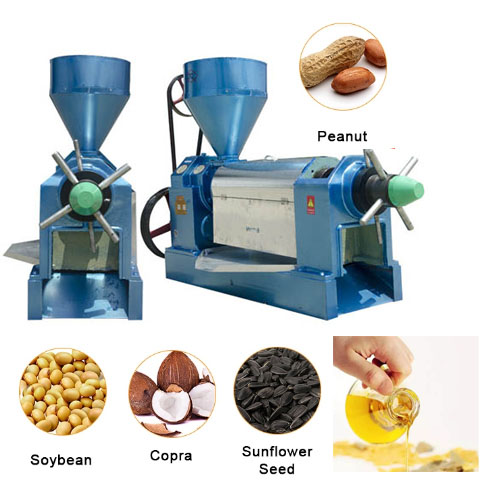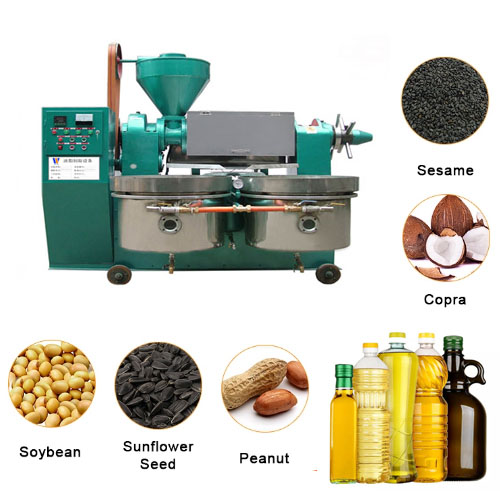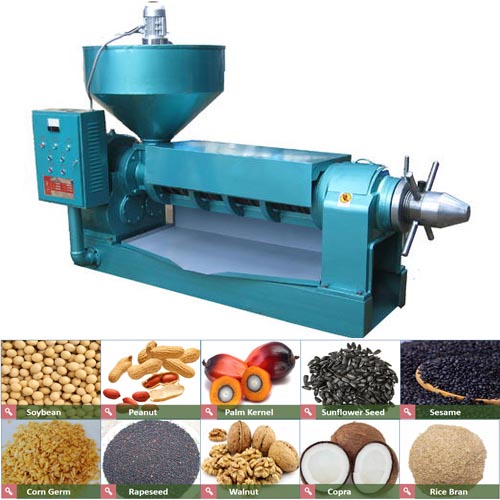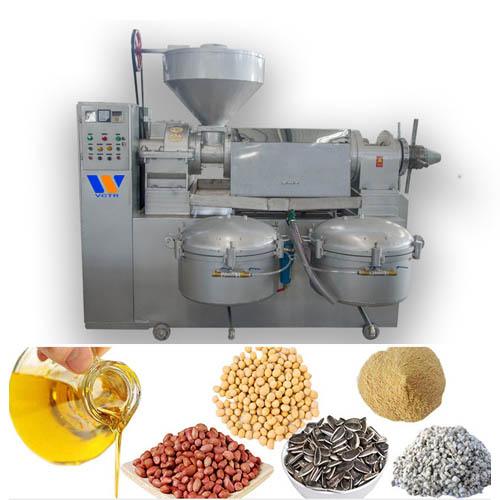Palm oil pressing,refining and fractionation(VII)-Edible vegetable oil bleaching technology
Introduction of edible vegetable oil bleaching technology
Generally, edible oil bleaching is to reduce the color of the oil and obtain light-colored or natural oil. However, the purpose of current edible oil bleaching is mainly to remove undesirable by-products in the oil, including those that are not conducive to food safety and sanitation. Certain harmful substances, such as polycyclic aromatic hydrocarbons caused by pollution, pesticide residues, oxidative deterioration substances and so on. People choose a variety of effective adsorbents to remove these by-products through selective adsorption, to ensure the safety and sanitation of edible oil, and to meet the requirements for further processing of oils.
Substances to be removed by bleaching
1) Oxidation products
Oxidation products mainly come from the auto-oxidation of fats and oils and the primary hydroperoxides formed by the action of lipid oxidase. During the processing and storage of fats, these oxidation products decompose to form secondary oxides, such as aldehydes and ketones, Epoxides, etc. In addition, the products formed by oxidation of tocopherols, sterols, pigment bodies and other lipids are also removed during the bleaching process.
2) Pigment bodies
Pigment bodies are mainly various carotenoids, chlorophyll and gossypol in cottonseed oil. The above compounds form colored products through oxidation. In addition, the pigment bodies interact with oxidized oils and often make the oils yellowish brown (or tan) . These pigment bodies and their oxidation products can be removed by the bleaching process.
3) Phospholipids and glycolipids
Although most of the phospholipids and glycolipids in the oil can be removed by degumming, a small amount of phospholipids and glycolipids are often left in the oil after degumming, which needs to be further removed by bleaching methods to obtain a bleached oil with very low phosphorus content. (For example, the phosphorus content is less than 5ppm), suitable for further physical refining.
4) Trace metals
Trace metals such as iron and copper may enter the oil during grease processing. Some greases are polluted by the environment and heavy metals such as cadmium and lead enter the oil. In addition, traces of nickel-based agents and other substances remain in the oxidized grease. The bleaching can remove trace metals remaining in the edible oil, which is beneficial to ensure the stability of the oil and food safety and hygiene.
5) Soap oils
Soap oils and fats often contain some water-insoluble metal soaps, such as calcium soap, magnesium soap, etc. These soaps are difficult to remove by washing with water. These soaps must be removed by bleaching methods, otherwise soaps will promote the oxidation and deterioration of oils. , Is not conducive to ensuring the quality of oils, and also hinders the further processing and utilization of oils.
6) Pollutants
There are two main types of contaminants in edible fats:
Pesticide residues
pesticides applied to oil crops, or certain pesticides that exist in the natural environment (water and soil), such as organic phosphorus and nitrogen-containing pesticides, can be biodegraded or even absorbed by plants and enter the oil.
Polycyclic aromatic hydrocarbons
Polycyclic aromatic hydrocarbons are often formed during the combustion process. If the oil is heated and dried, the oil will be contaminated by such substances, such as coconut oil. In addition, environmental pollution (sea water, air pollution, etc.) can also cause polycyclic aromatic hydrocarbons in some oils. The oil is bleached by activated carbon and then deodorized by vacuum to completely remove these harmful substances.
For more related technical process information, see https://www.victoryoilmachinery.com/Palm_oil_Production_Machine/
Generally, edible oil bleaching is to reduce the color of the oil and obtain light-colored or natural oil. However, the purpose of current edible oil bleaching is mainly to remove undesirable by-products in the oil, including those that are not conducive to food safety and sanitation. Certain harmful substances, such as polycyclic aromatic hydrocarbons caused by pollution, pesticide residues, oxidative deterioration substances and so on. People choose a variety of effective adsorbents to remove these by-products through selective adsorption, to ensure the safety and sanitation of edible oil, and to meet the requirements for further processing of oils.
Substances to be removed by bleaching
1) Oxidation products
Oxidation products mainly come from the auto-oxidation of fats and oils and the primary hydroperoxides formed by the action of lipid oxidase. During the processing and storage of fats, these oxidation products decompose to form secondary oxides, such as aldehydes and ketones, Epoxides, etc. In addition, the products formed by oxidation of tocopherols, sterols, pigment bodies and other lipids are also removed during the bleaching process.
2) Pigment bodies
Pigment bodies are mainly various carotenoids, chlorophyll and gossypol in cottonseed oil. The above compounds form colored products through oxidation. In addition, the pigment bodies interact with oxidized oils and often make the oils yellowish brown (or tan) . These pigment bodies and their oxidation products can be removed by the bleaching process.
3) Phospholipids and glycolipids
Although most of the phospholipids and glycolipids in the oil can be removed by degumming, a small amount of phospholipids and glycolipids are often left in the oil after degumming, which needs to be further removed by bleaching methods to obtain a bleached oil with very low phosphorus content. (For example, the phosphorus content is less than 5ppm), suitable for further physical refining.
4) Trace metals
Trace metals such as iron and copper may enter the oil during grease processing. Some greases are polluted by the environment and heavy metals such as cadmium and lead enter the oil. In addition, traces of nickel-based agents and other substances remain in the oxidized grease. The bleaching can remove trace metals remaining in the edible oil, which is beneficial to ensure the stability of the oil and food safety and hygiene.
5) Soap oils
Soap oils and fats often contain some water-insoluble metal soaps, such as calcium soap, magnesium soap, etc. These soaps are difficult to remove by washing with water. These soaps must be removed by bleaching methods, otherwise soaps will promote the oxidation and deterioration of oils. , Is not conducive to ensuring the quality of oils, and also hinders the further processing and utilization of oils.
6) Pollutants
There are two main types of contaminants in edible fats:
Pesticide residues
pesticides applied to oil crops, or certain pesticides that exist in the natural environment (water and soil), such as organic phosphorus and nitrogen-containing pesticides, can be biodegraded or even absorbed by plants and enter the oil.
Polycyclic aromatic hydrocarbons
Polycyclic aromatic hydrocarbons are often formed during the combustion process. If the oil is heated and dried, the oil will be contaminated by such substances, such as coconut oil. In addition, environmental pollution (sea water, air pollution, etc.) can also cause polycyclic aromatic hydrocarbons in some oils. The oil is bleached by activated carbon and then deodorized by vacuum to completely remove these harmful substances.
For more related technical process information, see https://www.victoryoilmachinery.com/Palm_oil_Production_Machine/

